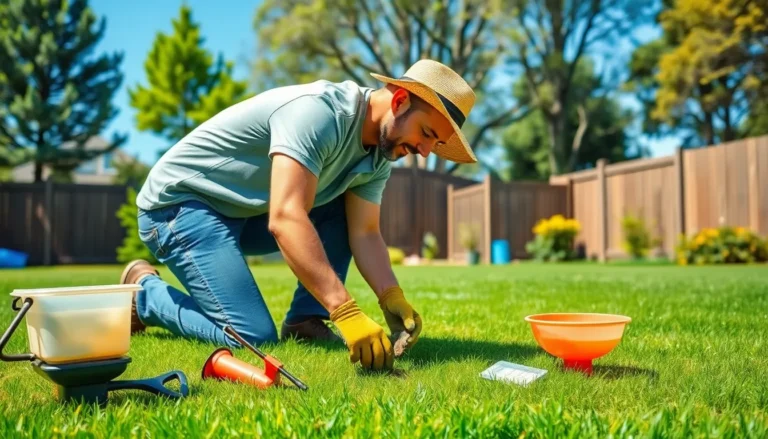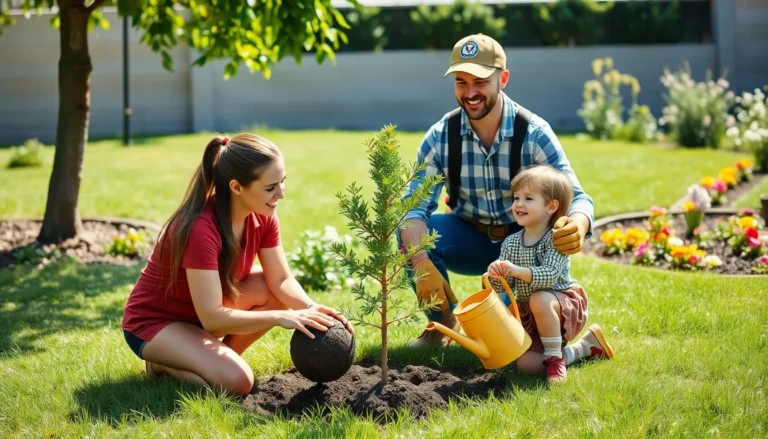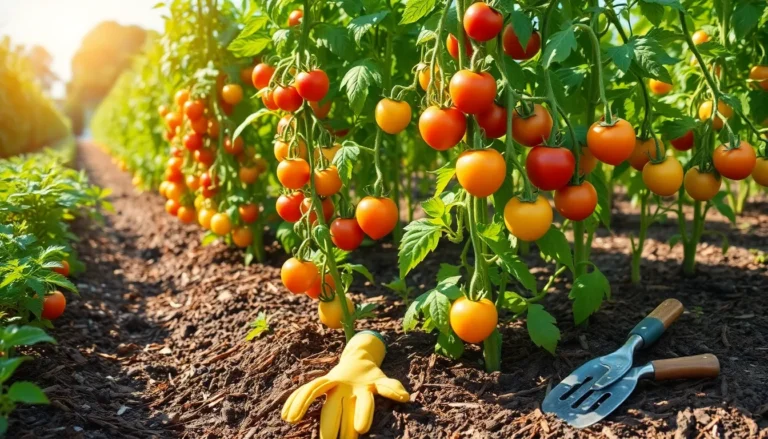Tips for Planting Strawberries: Unlock the Secrets to a Bountiful Harvest
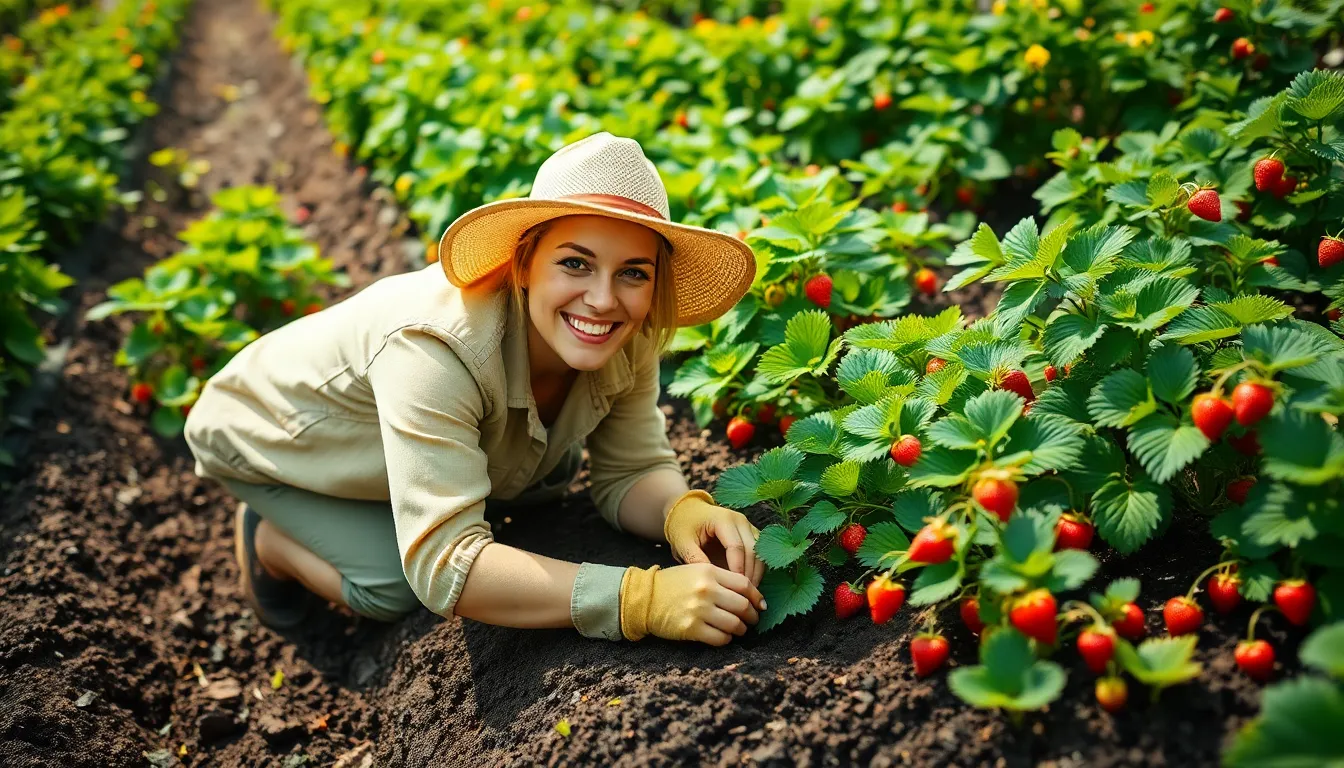
Strawberries are the ultimate garden treat—sweet juicy bites that make every bite feel like summer. Who wouldn’t want to pluck these ruby-red gems right from their backyard? But before you dive headfirst into a strawberry patch, it helps to know a few tricks of the trade. After all, nobody wants to end up with a crop of sad-looking berries that taste more like disappointment than deliciousness.
Tips For Planting Strawberries
Choose the right variety based on the climate and growing season. June-bearing strawberries produce large harvests in early summer, while ever-bearing types yield fruit from spring through fall.
Select a well-drained location with full sun exposure. Strawberries thrive in sunny spots receiving six to eight hours of sunlight daily.
Prepare the soil by enriching it with compost. Incorporating organic matter enhances soil fertility, leading to healthier plants.
Space plants adequately for optimal air circulation. Plant strawberries 12 to 18 inches apart in rows, allowing for growth and reducing disease risk.
Water regularly and deeply during dry spells. Moisture levels should remain consistent but avoid waterlogging, which can lead to root rot.
Apply mulch around the plants. Mulch retains moisture, suppresses weeds, and keeps the fruit clean.
Fertilize with a balanced fertilizer designed for fruits. Applying fertilizer at planting and again in early spring promotes vigorous growth.
Protect plants from pests and diseases through vigilant observation. Utilize row covers or organic pesticides when necessary to prevent infestations.
Harvest strawberries at peak ripeness. Fruit should be fully red and slightly soft for the best flavor. Use scissors to cut the stem, avoiding damage to the plant.
Rotate crops annually. Practices like crop rotation help maintain soil health and minimize pest issues.
By following these tips, gardeners can cultivate flourishing strawberry plants that produce delicious, sweet fruit.
Choosing The Right Variety
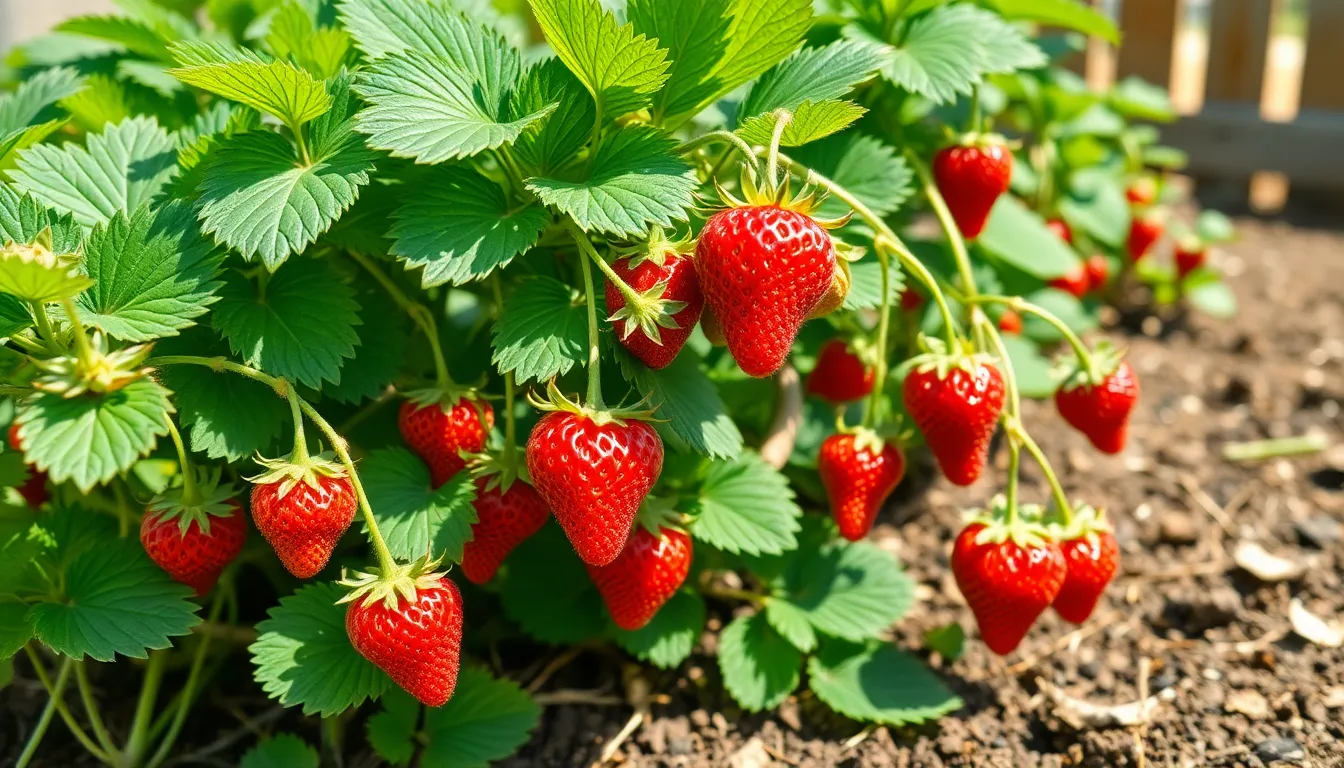
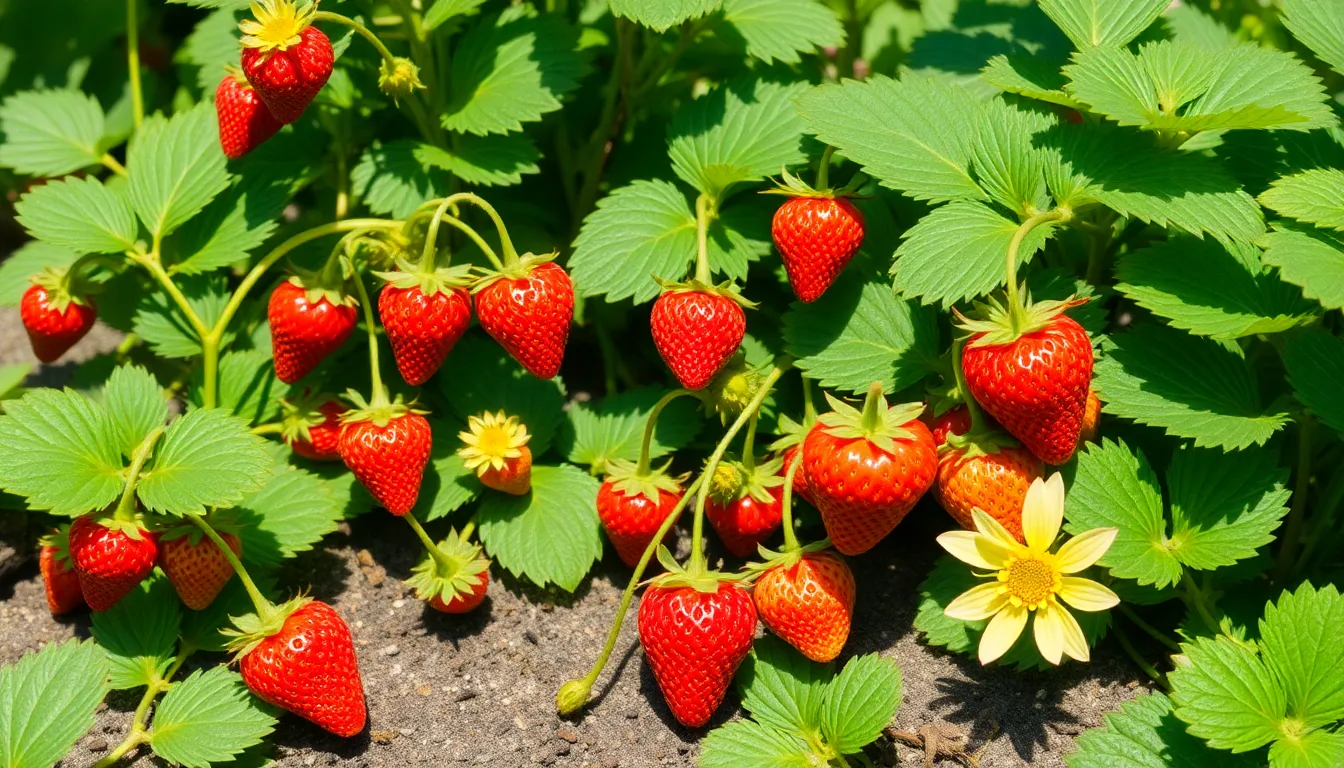
Selecting the right strawberry variety enhances flavor and yield. Different types cater to specific growing conditions and preferences.
June-Bearing Strawberries
June-bearing strawberries produce large, flavorful fruit in June. These varieties typically yield a single, abundant harvest each year. Popular options include ‘Honeoye’ and ‘Cavendish,’ both known for their sweet taste and firm texture. Gardeners favor these berries for making jams and desserts due to their robust flavor.
Ever-Bearing Strawberries
Ever-bearing strawberries generate fruit throughout the growing season. They provide multiple harvests, making them ideal for gardeners seeking continuous production. Varieties such as ‘Quinault’ and ‘Ozark Beauty’ are well-liked for their sweetness and versatility. These strawberries perform well in containers, offering flexibility in garden layout.
Day-Neutral Strawberries
Day-neutral strawberries bear fruit regardless of day length. This variety thrives in diverse climates, producing berries steadily from spring until the first frost. ‘Albion’ and ‘Seascape’ stand out for their excellent flavor and yield. Gardeners appreciate day-neutral strawberries for prolonged harvest periods, extending the enjoyment of fresh fruit throughout the season.
Preparing The Soil
Preparing the soil is a crucial step for successful strawberry planting. Gardeners should focus on creating the right environment for their plants to thrive.
Soil Quality and pH
Soil quality directly impacts strawberry growth and fruit flavor. A pH level between 5.5 and 6.5 produces optimal conditions for strawberries. Testing the soil beforehand helps determine its acidity. Organic matter, such as compost or well-rotted manure, enhances soil texture and fertility. Adding nutrients aids root development and boosts overall plant health. Keeping soil loose increases aeration, which is crucial for strawberries. Amending heavy clay soils with sand or organic matter improves drainage. This combination maximizes nutrient availability, ensuring plants absorb what they need for a bountiful harvest.
Drainage Considerations
Proper drainage prevents waterlogged conditions that can harm strawberry roots. Gardeners should choose a site with naturally well-drained soil. Raised beds work well, allowing excess moisture to escape while providing better control over soil conditions. Adding perlite or vermiculite improves drainage in heavier soils. Implementing mulch, like straw or wood chips, also aids in moisture retention and minimizes weed competition. Observing the site after rainfall helps identify any potential drainage issues. Ensuring that water drains away effectively promotes healthy root growth and reduces the risk of diseases.
Planting Techniques
Planting strawberries requires attention to specific techniques. Successful growth relies on proper spacing, arrangement, and consistent watering.
Spacing and Arrangement
Maintain adequate spacing between plants to promote airflow and minimize disease risk. A distance of 12 to 18 inches between each strawberry plant encourages healthy growth. Rows positioned 2 to 3 feet apart allow easy access for maintenance. Align plants in a staggered fashion to maximize sunlight exposure and prevent overcrowding. Consider using black plastic mulch to warm the soil; this enhances growth while suppressing weeds. Ensure that the crown remains slightly exposed above the soil line for optimal health.
Watering After Planting
Watering is crucial immediately after planting to establish strong roots. This process helps the plants settle into their new environment. Provide about 1 inch of water weekly, adjusting based on weather conditions. Drip irrigation systems deliver moisture directly to the roots and minimize water waste, encouraging strong growth. Avoid overhead watering to reduce leaf diseases and fungal issues. Monitor soil moisture regularly to keep the ground evenly moist, but not soggy. Proper watering practices support fruit development and enhance overall plant vigor.
Maintenance Tips
Maintaining strawberry plants ensures a fruitful harvest and healthy growth. Proper care covers fertilization and pest management.
Fertilizing Requirements
Balanced nutrition promotes robust plants. A fertilizer high in potassium and phosphorus boosts flowering and fruiting. Initial application occurs during planting, with a second round following the first harvest. Many gardeners find a rate of 1 to 2 pounds per 100 square feet effective. Organic options like bone meal or fish emulsion enrich soil while maintaining a natural approach. Regular inspection encourages gardeners to adjust nutrient levels based on plant growth and soil test results.
Pest and Disease Management
Effective pest management preserves strawberry health. Common pests include aphids, spider mites, and slugs. Monitoring plants regularly helps catch infestations early. Natural predators, such as ladybugs and lacewings, can minimize pest populations. Diseases, like powdery mildew and root rot, threaten production, necessitating careful watering and spacing. Removing infected plants quickly reduces spread. Implementing crop rotation each year limits disease buildup, promoting a thriving strawberry patch through sustainable practices.

